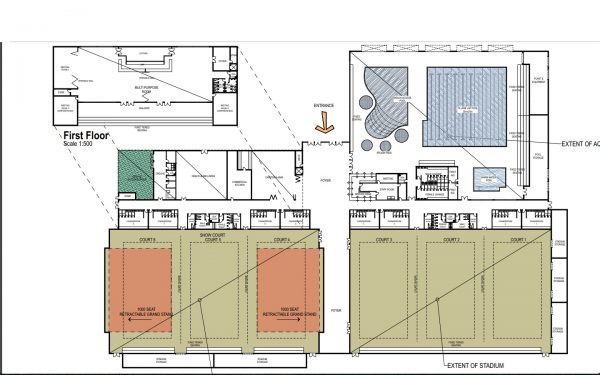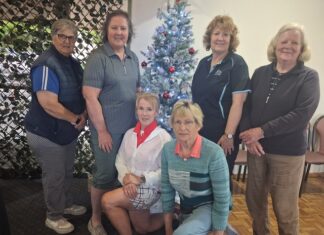
FORTY million dollars for an indoor sports centre seems hugely out of economic kilter with the real needs of our community.
If the people of Mount Gambier believe that spending $40m on an indoor sports centre is the city’s main priority then society has lost all perspective and its conscience on wider community values.
It is economic madness and a social injustice for governments and council to spend $40m on a sports centre when so many other areas of society are in desperate need.
Up to a point, sport/leisure is important, but is it worth spending $40m when funds are urgently needed for general health, mental health, hospitals and aged care, to name a few?
Admittedly much of the centre’s funding is likely to come from federal and state government allocated sports funds, but $10m will come from council.
Ratepayers might have supported a $25m centre, but council has a task ahead to justify how everyone will benefit from spending $40m on a sport centre.
If this project goes ahead it will be the largest infrastructure project in Mount Gambier’s history – four times the cost of the previous biggest – the $11m public library.
That puts it into perspective – four times bigger!
Also, how can anyone justify spending $40m on a sport/leisure centre when many sports are in decline?
Tennis has half the numbers it had 30 years ago.
While cricket, football, baseball, golf and softball may not play a major part in usage at the centre, it is important to recognise they are struggling with numbers, so there are no guarantees the same may not happen to netball and basketball into the future.
That is why city council must undertake a major investigation into what sport participation might look like in 10-15 years time before proceeding.
Already E-Sport is the fastest growing sport in the world and in the past year 450 million people were playing online sport.
That figure is expected to treble in two years.
AFL clubs have invested in E-Sport, tipped to be an Olympic sport within 10 years.
These facts are frightening and pose a serious threat to all sports.
If it continues to grow, where will the participants come from to help pay running costs?
Council have been steadfast in its view this centre will be for all the community, but will it?
In regard to sport, it caters mainly to a minority with basketball, netball, tennis and swimming being the main beneficiaries and with the plan for six courts it is now obvious one sport will benefit most, so let’s call it what it is – a basketball stadium with a half-size pool and a few add-ons costing $40m.
Sports played predominantly outdoors misses, narrowing the field of sports that actually benefit to a minority.
Indoor cricket was tried and failed and indoor soccer and netball at other private indoor centres attract only modest participation.
User-pay costs at the new centre may keep table tennis at the show hall, while other minor sports such as badminton and volleyball are hardly likely to bring great numbers to the centre.
The 25-metre indoor pool concept has already come in for criticism as it is unlikely to attract the best competition swimmers.
The original four court centre seating 1000 and a heated pool have ballooned out to six courts with seating for 2000.
The belief is that this will attract major sporting fixtures, such as netball, tennis, basketball and maybe concerts.
Mount Gambier was once part of the second tier world women’s tennis tour, but it failed miserably to attract spectators, proving major sporting events are not always a success.
If the Pioneers makes the centre its home, a councillor told me their playing conditions dictate there can only be one set of court line markings, therefore other sports, notably netball, cannot play on the major court during that time, so there will be no national visiting netball teams playing on the prime court unless line markings are altered each time – another cost.
The Pioneers season runs through autumn and winter yet plays only 10 home minor round games each year, leaving much of the 2000 seating vacant for most of the year.
The costs of such an outlay for so little use do not add up.
Keeping running costs down remains an issue, so it is pertinent to look at history.
In 1969-70, basketballers and officials worked tirelessly to complete the stadium.
They punched nails into the floorboards, covered them with putty, followed by varnishing the surface using mops.
It was a cost-cutting measure aimed at reducing the overall cost of the stadium, but it worked.
Importantly there was no impost on taxpayers/ratepayers because it was self-funded through a bank loan and despite building a third court in 1974 was debt-free by 1976.
Compare that to today where everyone wants governments and councils (ratepayers) to pay.
In 1970, to help pay for running costs the basketball executive charged clubs a fee, $15/ hour, for use of a full court for practice, which in today’s terms would equate to $80-$90 or more.
While clubs had a magnificent facility they still had to pay to practice and also paid, even as players, to enter the stadium to play.
To get ratepayers’ approval for the indoor centre a user-pay fee would need to be significant and it may be $80-$100/hour for a court.
Ratepayers will also be keen to see if, like at metropolitan entertainment venues, a percentage from the admission fee for major events is used to pay for running costs.
This should apply to international fixtures, local games/events and Pioneers matches.
Ratepayers will ask plenty of questions in the coming months, but the immediate one is whether society can justify spending $40m for sport ahead of so many other community priorities?
If councillors have not already done so they should be questioning whether this indoor centre is indeed for all the community or just a few sports.
Some councillors believe running costs will force rates up 6-7pc during the next five years while one pro-centre councillor last week wanted rates up this year.
Finally, council has no mandate to increase rates for an indoor centre until there has been a poll of ratepayers, which, according to the mayor, will come at no cost as it could be sent out with rate notices containing all financial costings with boxes to tick for ratepayers’ approval or otherwise.





